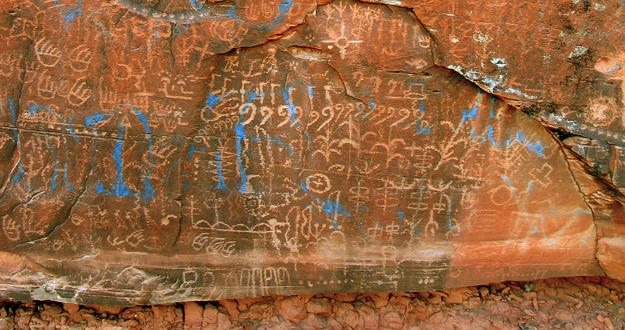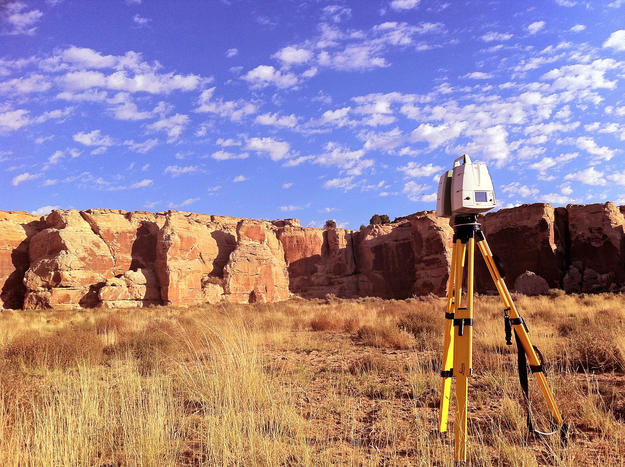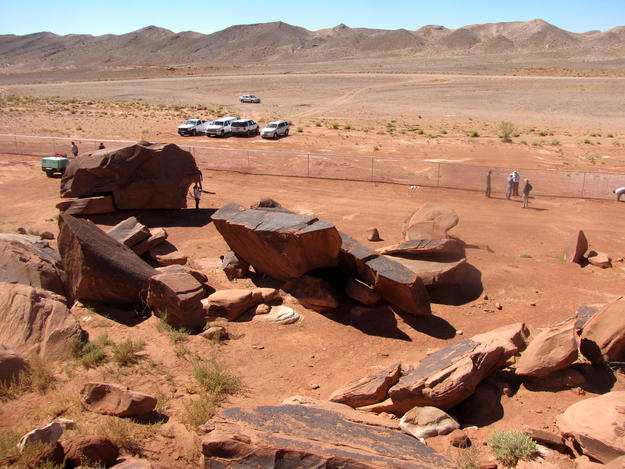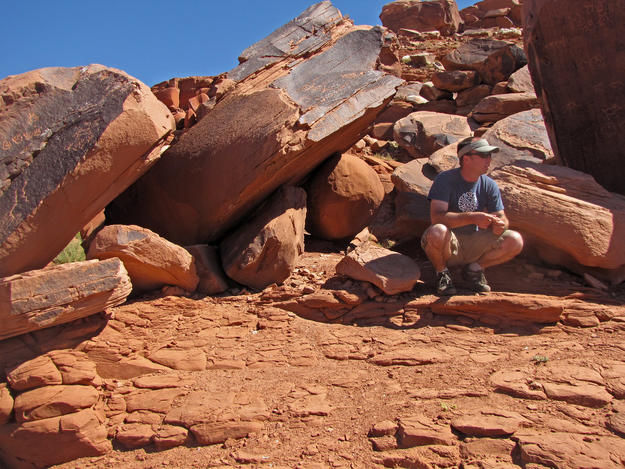Tutuveni Petroglyph Site
2008 World Monuments Watch
The Tutuveni Petroglyph site boasts more than 5,000 Hopi clan symbols that were inscribed during the ceremonial pilgrimage to Ongtupqa, or the Grand Canyon, which is for many Hopi the point of their people’s emergence into the world. The glyphs relate to known historic and extinct Hopi tribal groups, and date from 1200 to the 1950s. The site contains over 150 boulders spread over an area of approximately 65,000 square feet (6,000 square meters) along the slope at the base of the Echo Cliffs. Most of the glyphs are on eight boulders, and one stone—known as boulder 48—features 60% of the total symbols at the site. It is a ritual for Hopi youths to visit the site and the petroglyphs as part of their education about their ancestors, tribal traditions, and the history of the Hopi nation. The glyphs also play an important role in the modern scholarship of Hopi language, iconography, and history.
Digitally preserving the current state of the petroglyphs
Vandalism has already significantly damaged the petroglyphs at Tutuveni, and the severity of the defacement has escalated in recent years. In order to protect the petroglyphs from irreparable damage, we documented and protected the site in 2010. The project at Tutuveni included laser-scanning, hands-on training in digital documentation, and the installment of a protective fence and security surveillance cameras. We collaborated with CyArk, Hopi Land Information Systems, Petrified Forest National Park, and Redlands University on this project. The high definition laser-scanning survey focused predominately on the eight boulders with the vast majority of the glyphs. CyArk and members from the Hopi Cultural Preservation Office took scans of the site’s symbols and photographed the landscape to capture the context of the entire boulder field. To restrict vehicular access and deter trespassers, a fence was installed as well as signage citing the American Antiquities Act of June 8, 1906, and a warning that the area is under 24-hour surveillance and access is allowed only with written permission from the Hopi and Navajo tribes. In 2011 CyArk launched a feature on their website showcasing the digital scans of the site.
The Tutuveni Petroglyph Site represents a vital and fragile cultural heritage monument that allows Hopi youth to celebrate their ancestral heritage. It has provided valuable information to scholars on the Hopi. Our project digitally preserved the current state of the petroglyphs to bring awareness of the site and encourage continuing respect for this sacred place.




